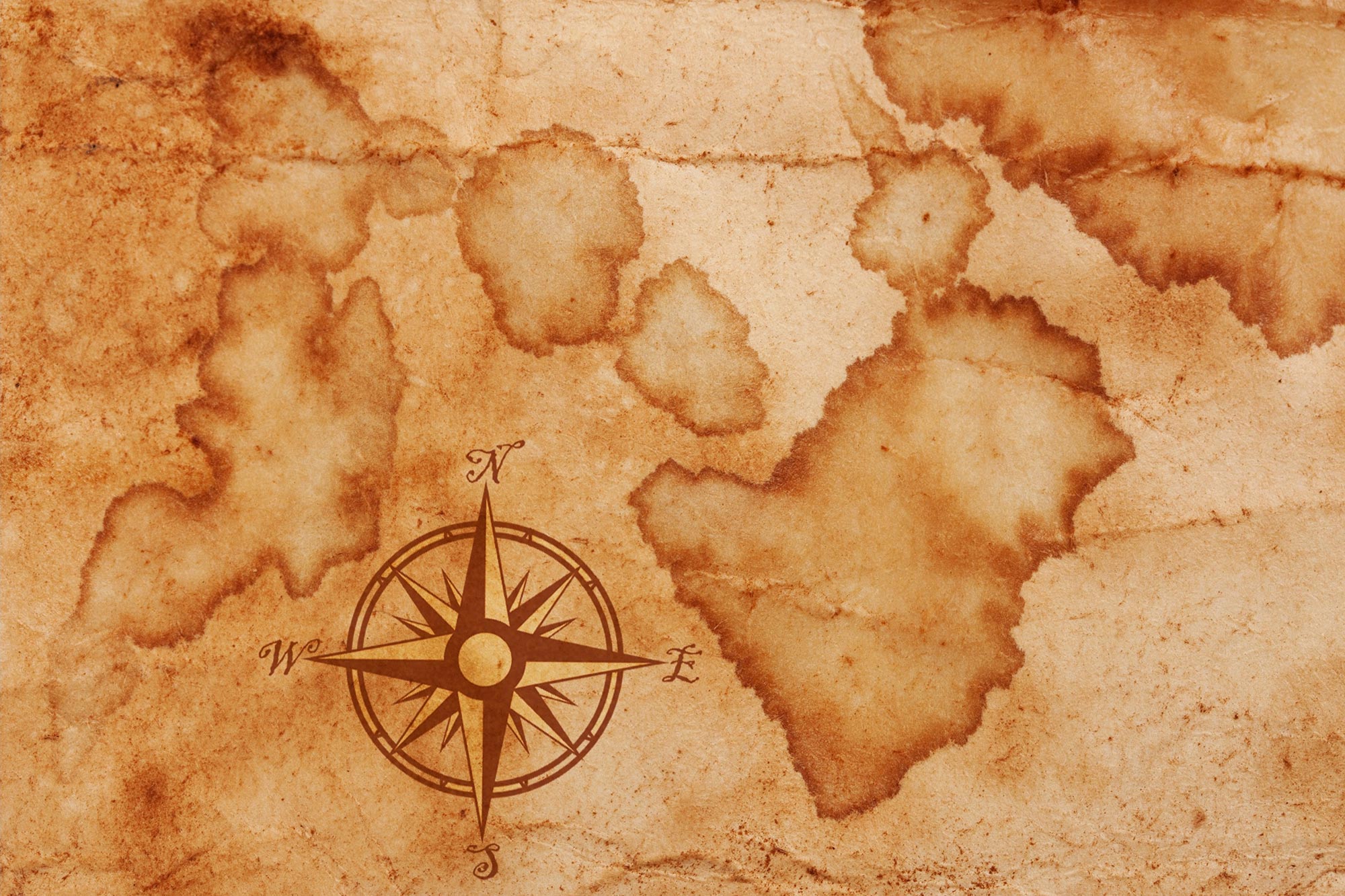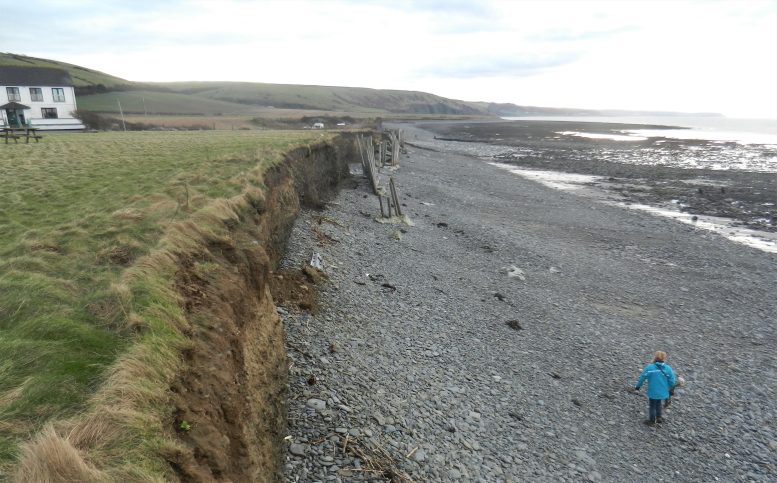
Posted on 09/12/2022 1:01:57 PM PDT by Red Badger

Old Map Islands
The study was inspired by the Gough map, which depicts two “lost” islands in Cardigan Bay offshore west Wales, United Kingdom.
A new study of coastal geography finds that the lost islands mentioned in Welsh folklore and poetry are plausible. New evidence on the evolution of west Wales’ coastline has shown a Welsh tradition going back to the medieval era of a landscape lost to the sea is plausible.
The researchers from Swansea University and the University of Oxford suggest how two islands came into being and subsequently vanished using geological data and a medieval map.
The study was inspired by the Gough Map, the oldest surviving map of Great Britain. The map is believed to have potentially originated from the thirteenth century and is currently housed in Oxford’s Bodleian Library.
The map depicts two lost islands in Cardigan Bay in west Wales. Each of them is roughly one-quarter the size of the north Wales island of Anglesey. One is between Aberystwyth and Aberdovey, while the other is between there and Barmouth to the north.

Cardigan Bay Erosion
New research has shown that “lost islands” mentioned in Welsh folklore, could be the remnants of a low-lying landscape underlain by soft glacial deposits laid down during the last ice age. Since then, forces of erosion have worn away the land, reducing it to islands, before these too were worn away and disappeared by the sixteenth century. Credit: Prof Simon Haslett, Swansea University
Simon Haslett, Honorary Professor of Physical Geography at Swansea University, and David Willis, Jesus Professor of Celtic at the University of Oxford, conducted the research.
Their research analyzes historical sources as well as geological evidence from the seafloor and shoreline. It suggests a model for how the coast has grown since the last ice age 10,000 years ago, which provides a possible explanation for the ‘lost’ islands.

Black Book of Carmarthen
The Black Book of Carmarthen (1250 approx) is believed to be the earliest surviving complete manuscript written in the Welsh language. This extract says, in Welsh: “Stand forth, Seithenhin, and look upon the fury of the sea; it has covered Maes Gwyddneu.” The new research on the evolution of the coastline in west Wales suggests that claims such as this of a drowned land are plausible. Credit: Llyfrgell Genedlaethol Cymru/National Library of Wales
They speculate that the islands are the remains of a low-lying terrain underlain by soft glacial deposits from the last ice age. Since then, erosional processes have worn away the land, reducing it to islands, before these too were worn away and disappeared by the sixteenth century.
As finer sediments of glacial deposits are eroded away, the larger gravel and boulder component is left on the seafloor. The position of the islands coincides with the location of submarine accumulations of gravel and boulders, known locally as sarns.
Simon Haslett and David Willis Prof David Willis (l), Jesus Professor of Celtic at the University of Oxford, and Prof Simon Haslett (r) Emeritus professor of geography at Swansea University. Their research showed that myths about lost islands on the west Wales coast were plausible. Credit: Prof Simon Haslett, Swansea University
Professor Simon Haslett of Swansea University Department of Geography said: “We know that the west Wales coast has changed significantly over time. Evidence from the Roman cartographer Ptolemy suggests the coastline 2000 years ago may have been some 13 km further out to sea than it is today. The Gough Map is extraordinarily accurate considering the surveying tools they would have had at their disposal at that time, and the two islands are clearly marked.”
He continues, “Our research increases our understanding of potential coastal processes acting along the coast of Cardigan Bay. It can also help with future research on post-glacial evolution of similar lowlands in other parts of northwest Europe. Understanding coastline dynamics has never been more important. Some towns along the area we studied are vulnerable to climate and sea-level change, and it has been suggested that it may lead to some of the first climate change refugees in the UK.”
David Willis, Jesus Professor of Celtic Studies at the University of Oxford, said: “Our evidence may provide an explanation of how the story of Cantre’r Gwaelod (‘The Hundred of the Bottom’) may have arisen. This lost land is said to have suffered a catastrophic inundation and is referred to in poetry in the Black Book of Carmarthen and in later folklore.”
Reference: “The ‘lost’ islands of Cardigan Bay, Wales, UK: insights into the post-glacial evolution of some Celtic coasts of northwest Europe” by Simon K. Haslett and David Willis, 11 June 2022, Atlantic Geoscience. DOI: 10.4138/atlgeo.2022.005
Yes, but only in Wales.
You're welcome. Ysbyty is a hospital. My great great grandfather made shoes for the miners at the Ysbyty Ystywyth lead mine. Locating his house/shop along the road between their homes and work was a strategic choice. The shoes had a wood sole and a sheep skin leather upper. The acid in the mines damaged the footwear, so it needed replacing often. The rest of the family raised the sheep that provided wool, meat and leather for the shoe production.
Lead was formed into strips that were used to hang slate used for roofing the homes. Slate was mined north of lead/silver mines. The south has coal mines.
Cool story- thanks for sharing.
Sounds like he was the sole provider...
My great great grandmother urged my great grandfather to avoid "the evil shoe business". After a brief time tending sheep, he left for Liverpool. At age 18, he signed on as ship's company to earn his passage to the United States. He found his sweetheart from Aberystwyth living in Pittsburgh. To impress his future father-in-law, he signed up for the Union Army and was promptly in "boot camp" on a rail car enroute to the battle lines with the Confederates. He ended up captured and survived two years in a Confederate POW camp. In 1865, he returned to Pittsburgh and married my great grandmother. My grandfather and his twin brother were the youngest of the 19 children. They were born in 1887.
There is my connection to Wales. I've had to learn the language on my own as my great grandfather insisted that his children spoke English to ensure success in America.
Wales was also known for good church choirs.
The miners often sang music in parts on the way into the mines. When the LDS missionaries came to Wales, the entire village of Merthyr Tydfil joined the church. Most emigrated to the US. They missed the choirs that they had in Wales and formed a fairly well known group, the Mormon Tabernacle Choir. The choir leader has been of Welsh ancestry for a very long time.
I've been active with Welsh groups in Southern CA. Periodically, a Gymanfa Ganu is scheduled...often at a Presbyterian church. The community gathers and we sing in Welsh and in parts. Guest soloists are invited from Wales for those events. In August, there is an Eisteddfod held in Wales where music and poetry competitions/performances occur. The best poet (bard) wins a carved wooden chair.
I had need to fill a half a semester in my senior year of high school. Choir was my choice. Cute young ladies and fun music to perform. We competed in acapella format singing in Italian and a modern presentation of the musical Hair.
I didn't get my hands on a Welsh language hymnal until 1993. It took some time to learn the language sufficiently to sing in a choir format. I generally prefer the Welsh folk music genre. Plethyn and Linda Healy have been prolific in recording folk music. It turns out that my friends Meredydd Evans and his wife Phyllis Kinney spent lots of time digging the old music out of the library in Aberystwyth. Linda and her brothers (Plethyn) brought the research to life.
Here is a live concert with Plethyn performing Can Melangell
Thanks!
Disclaimer: Opinions posted on Free Republic are those of the individual posters and do not necessarily represent the opinion of Free Republic or its management. All materials posted herein are protected by copyright law and the exemption for fair use of copyrighted works.